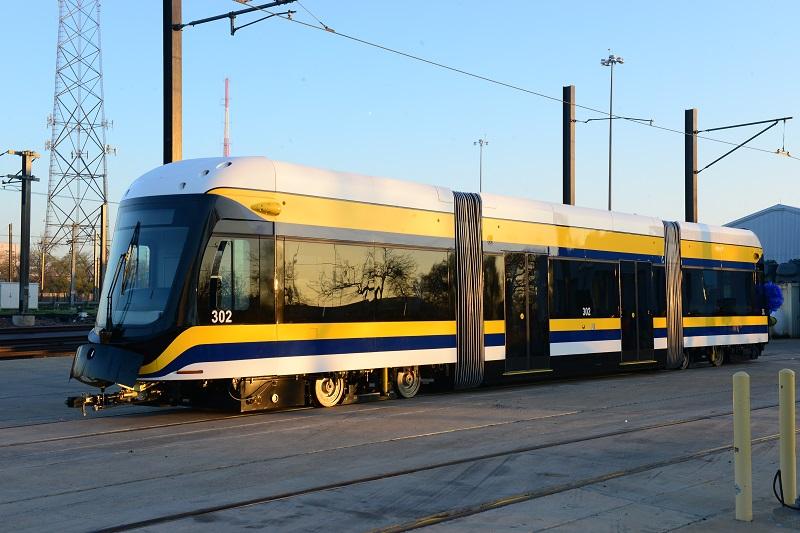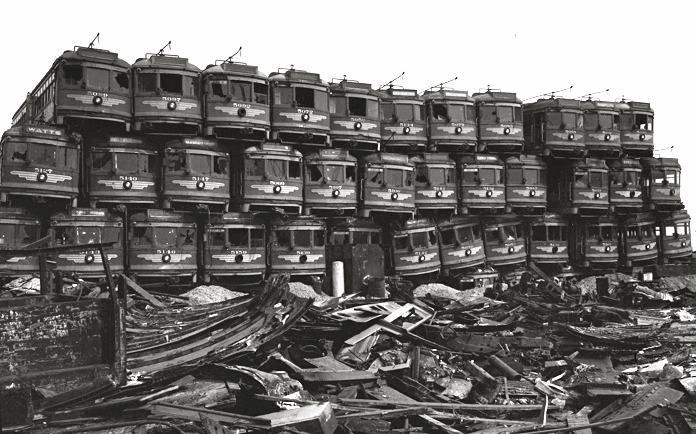Texas
Related: About this forumOak Cliff Welcomes Back Streetcars -- After A Nearly 60-Year Absence
http://keranews.org/post/oak-cliff-welcomes-back-streetcars-after-nearly-60-year-absence?__utma=164821157.1971756751.1415036490.1428693505.1428935008.324&__utmb=164821157.18.10.1428935011&__utmc=164821157&__utmx=-&__utmz=164821157.1428502992.318.29.utmcsr%3Dgoogle%7Cutmccn%3D%28organic%29%7Cutmcmd%3Dorganic%7Cutmctr%3D%28not+provided%29&__utmv=-&__utmk=132565134
Bringing streetcars back to Oak Cliff after a nearly 60 year absence was a dream of neighborhood activist Jason Roberts.
“Back on 2006 we created an advocacy organization which is a faux authority called the Oak Cliff Transit Authority," Roberts said. "We developed this hair brained idea to bring the streetcar back to Oak Cliff.”
The city owns the line. DART operates it. And getting the streetcars rolling again is expensive, about $50 million dollars. A federal stimulus grant of $23 million jump started the project, with other regional transportation funds to follow.
Cooley Hurd
(26,877 posts)
The General Motors streetcar conspiracy (also known as the Great American streetcar scandal[dubious – discuss]) refers to convictions of General Motors (GM) and other companies for monopolizing the sale of buses and supplies to National City Lines and its subsidiaries, and to allegations that this was part of a deliberate plot to purchase and dismantle streetcar systems in many cities in the United States as an attempt to monopolize surface transportation, and to urban legends and other folklore inspired by these events.
Between 1938 and 1950, National City Lines and its subsidiaries, American City Lines and Pacific City Lines—with investment from GM, Firestone Tire, Standard Oil of California through a subsidiary, Federal Engineering, Phillips Petroleum, and Mack Trucks— gained control of additional transit systems in about 25 cities.[3] Systems included St. Louis, Baltimore, Los Angeles, and Oakland. NCL often converted streetcars to bus operations in that period, although electric traction was preserved or expanded in some locations. Other systems, such as San Diego's, were converted by outgrowths of the City Lines. Most of the companies involved were convicted in 1949 of conspiracy to monopolize interstate commerce in the sale of buses, fuel, and supplies to subsidiary companies, but were acquitted of conspiring to monopolize the transit industry.
Some claim this played a key role in the decline of public transit in cities across the United States—notably Edwin J. Quinby, who drew attention to NCL's ownership structure in 1946, with mixed results, and later Bradford C. Snell, an assistant attorney for the United States Senate's anti-trust subcommittee, whose 1974 subcommittee testimony brought the issue briefly to national awareness. Quinby and Snell argued that destruction of streetcars systems was an integral part of a larger strategy to push the United States into automobile dependency. Most transit scholars disagree, suggesting that transit system changes were brought about by other factors; economic, social, and political factors such as unrealistic capitalization, fixed fares during inflation, changes in paving and automotive technology, the Great Depression, anti-trust action, the Public Utility Holding Company Act of 1935, labor unrest, market forces including declining industries' difficulty attracting capital, rapidly increasing traffic congestion, the Good Roads Movement, urban sprawl, tax policies favoring private vehicle ownership, taxation of fixed infrastructure, franchise repair costs for co-located property, wide diffusion of driving skills, automatic transmission buses, and general enthusiasm for the automobile.
Recent popular studies[dubious – discuss] question the argument that the alleged conspirators had a significant impact on the decline of the streetcar system, suggesting rather that they were setting themselves up to take advantage of the decline as it occurred. Guy Span suggested that Snell and others fell into simplistic conspiracy theory thinking, bordering on paranoid delusions[5] stating:
Clearly, GM waged a war on electric traction. It was indeed an all out assault, but by no means the single reason for the failure of rapid transit. Also, it is just as clear that actions and inactions by government contributed significantly to the elimination of electric traction."
In 2010 CBS's Mark Henricks reported:
The story as an urban legend has been studied extensively by Martha Bianco, Scott Bottles, Sy Adler, Robert Post, and Jonathan Richmond. It has been explored several times in print, film and other media, notably in Who Framed Roger Rabbit, Taken for a Ride and The End of Suburbia.
Only a handful of U.S. cities have surviving effective rail-based urban transport systems based on streetcars or trams, including Newark, Philadelphia, San Francisco, Pittsburgh, New Orleans and Boston; others are re-introducing them. In many of these cases, the vehicles in question do not actually ride on the street. Boston had all of its downtown lines elevated, or buried, by the mid- '20s, and most of the surviving lines at grade operate on their own right of way. San Francisco and Newark similarly use tunnels.
Auggie
(31,194 posts)dem in texas
(2,674 posts)I was born at Methodist Hospital in Oak Cliff and 75 years later, I am again a "Cliffite". Back in the 1950's we would ride the street car from Jefferson to downtown Dallas or on out to Fair Park. I loved it when it when across the river bottom on the wood trestle. You got a loud "clickity-clack".
The new one is ending right in front of El Fenix, a restaurant where I ate Tex-Mex as a teen. Today we are going over there for lunch and will see the new streetcar then.
Oak Cliff is the best kept secret in Dallas with beautiful well-kept neighborhoods, lots of big rolling hills and mature trees. The Bishop Arts district is growing with new restaurants and shops being added all the time. The Old English Building on Davis is finally being restored and Kiest Park is going to build a monument to Stevie Ray Vaughn. We moved back to Dallas and Oak Cliff in 1981 after living in many areas of the US and overseas. My sister just moved back to Texas from New England and she was outbid on several homes before she finally snagged a nice 1950's brick in the Wynnewood Hills area of Oak Cliff. The old Dallas myth - Fear of Oak Cliff - is finally being put to rest.
Downwinder
(12,869 posts)from Dallas, Texas, to Denison, Corsicana, and Waco.
allan01
(1,950 posts)i usually celebrate with this song when i hear new systems come on line . next time gm. chrysler. ford and others come up to capital hill and beg for monies to keep them going and turn around and sue us for more , should be reminded of the scandal.